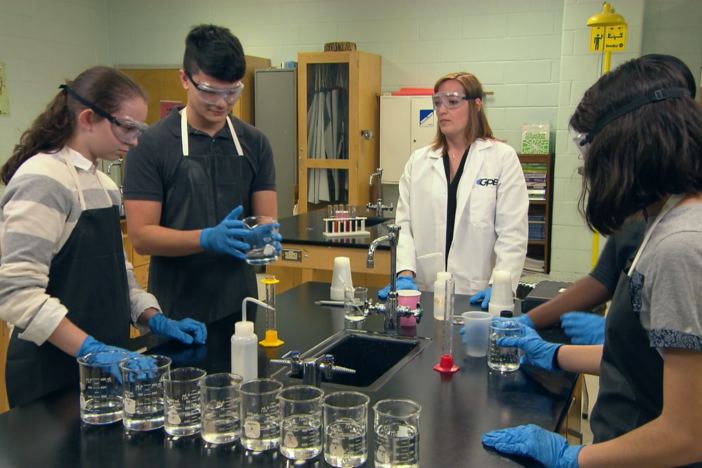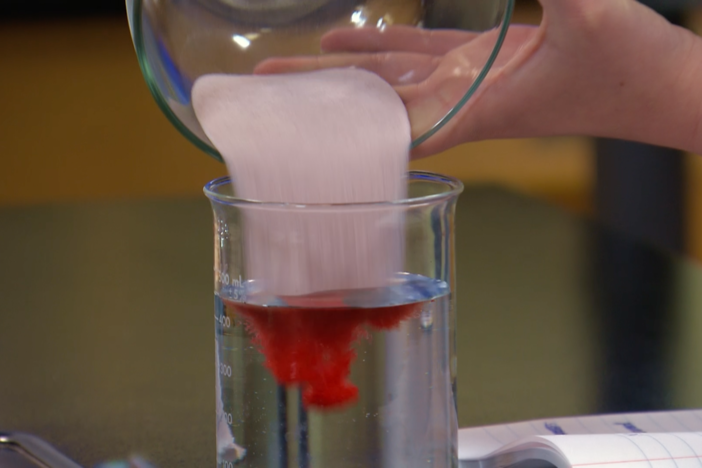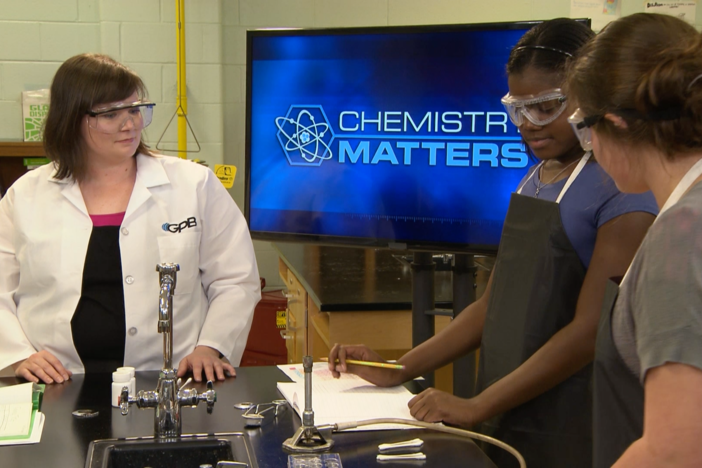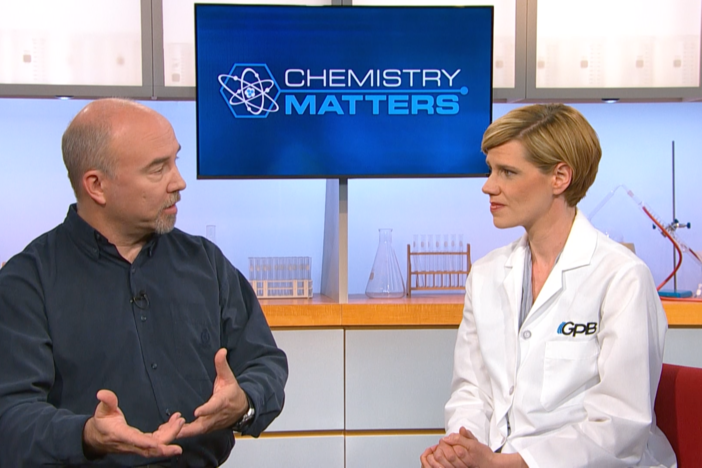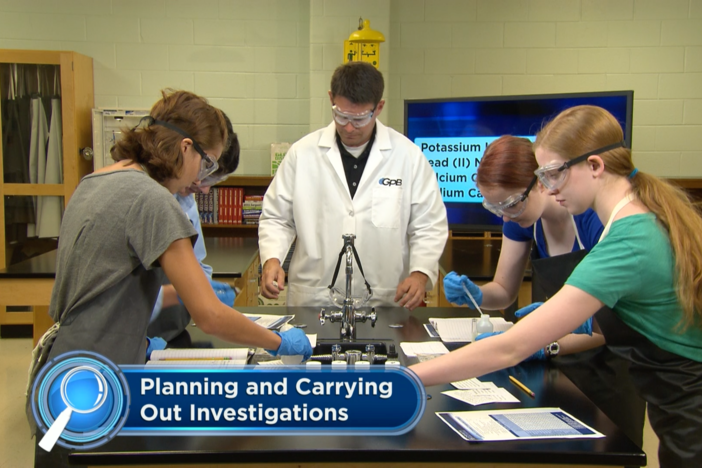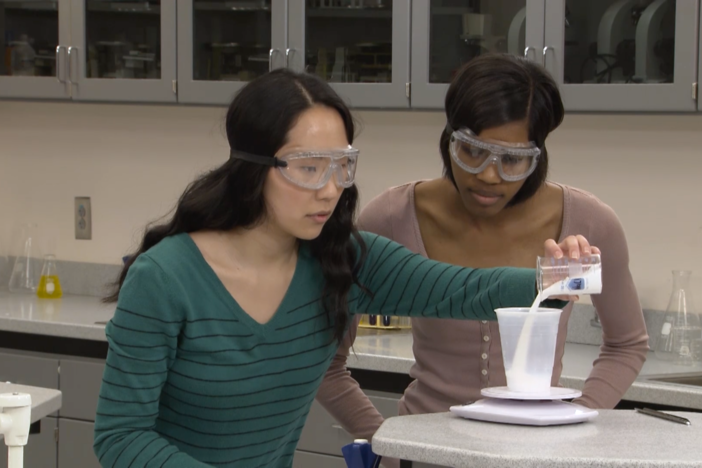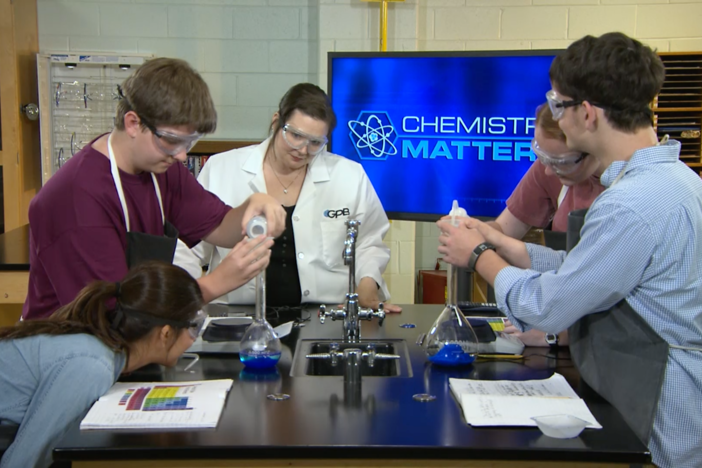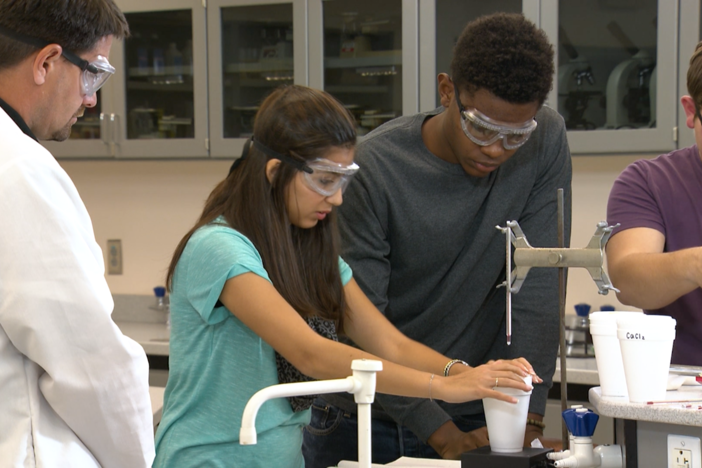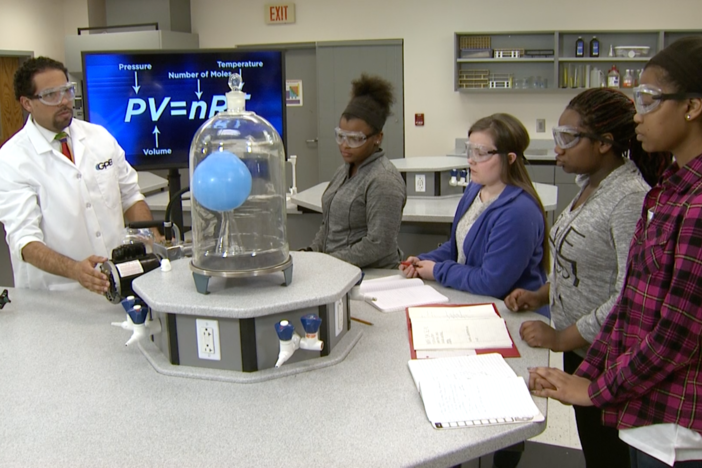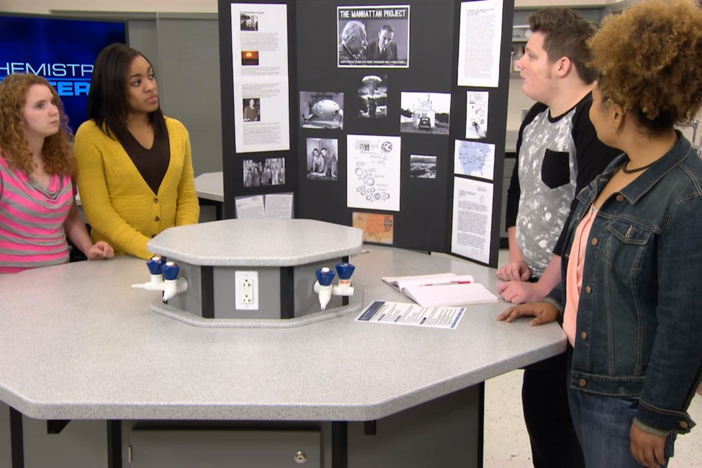Segment C: Atomic Structure Review
Segment C reviews the information covered in Unit 3, "Atomic Structure." Students looked at models of atoms, discussed the Periodic Table, and heard from a fireworks expert who explained how chemistry is behind the variety of colors of a fireworks display.
Segment C: Atomic Structure Review
Segment C reviews the information covered in Unit 3, "Atomic Structure." Students looked at models of atoms, discussed the Periodic Table, and heard from a fireworks expert who explained how chemistry is behind the variety of colors of a fireworks display.
Science
Obtain, evaluate, and communicate information about the use of the modern atomic theory and periodic law to explain the characteristics of atoms and elements.
Evaluate merits and limitations of different models of the atom in relation to relative size, charge, and position of protons, neutrons, and electrons in the atom.
Construct an argument to support the claim that the proton (and not the neutron or electron) defines the element's identity.
Construct an explanation based on scientific evidence of the production of elements heavier than hydrogen by nuclear fusion.
Construct an explanation that relates the relative abundance of isotopes of a particular element to the atomic mass of the element.
Construct an explanation of light emission and the movement of electrons to identify elements.
Use the periodic table as a model to predict the relative properties of elements based on the patterns of electrons in the outermost energy level of atoms (i.e. including atomic radii, ionization energy, and electronegativity).
Develop and use models, including electron configuration of atoms and ions, to predict an element's chemical properties.
Obtain, evaluate, and communicate information from the Periodic Table to explain the relative properties of elements based on patterns of atomic structure.
Develop and use models to compare and contrast the structure of atoms, ions and isotopes.
Analyze and interpret data to determine trends of the following:
- Number of valence electrons
- Types of ions formed by main group elements
- Location and properties of metals, nonmetals, and metalloids
- Phases at room temperature
Use the Periodic Table as a model to predict the above properties of main group elements.
Obtain, evaluate, and communicate information about the structure and properties of matter.
Develop models (e.g., atomic-level models, including drawings, and computer representations) by analyzing patterns within the periodic table that illustrate the structure, composition, and characteristics of atoms (protons, neutrons, and electrons) and simple molecules.
The Chemistry Matters teacher toolkit provides instructions and answer keys for labs, experiments, and assignments for all 12 units of study. GPB offers the teacher toolkit at no cost to Georgia educators. Complete and submit this form to request the teacher toolkit. You only need to submit this form one time to get materials for all 12 units of study.
